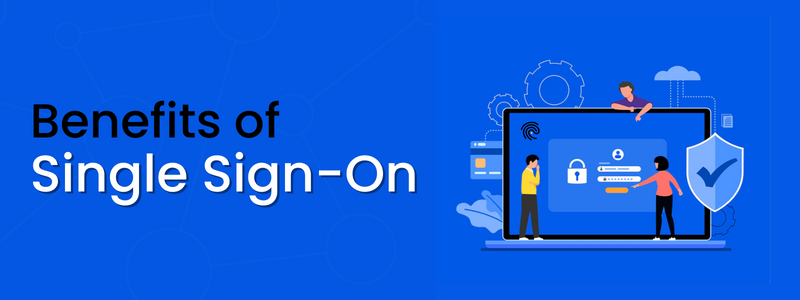Top Benefits of Single Sign-On (SSO)

Customers want easy access to various applications from any location and on any computer as more businesses migrate to the cloud. Likewise, trying to manage all of the hundreds of touchpoints under various labels that are present in most large organizations will put a load on their IT departments.
When you value your customers’ time, they will reciprocate by engaging even more on your platform. The advantage of SSO for businesses operates on a similar principle.
What is SSO? In one sentence
A user can access various applications with just one set of login information, such as a name and password, by using a single sign-on (SSO), a session, and a user authentication service.
To know more about How Does SSO Work? We have a full dedicated blog on it that you should definitely go through before reading this blog
What if your IT team no longer had to waste valuable resources and time managing user accounts? What if your staff could concentrate on core business processes rather than fighting “password fatigue”? Fortunately, there’s a way to do both.
Enter single sign-on (SSO).
Benefits of SSO That Every Business Should Know
Improves Productivity
Less the number of support calls: Users who only need one password to access all of their apps won’t need it as frequently.
Enhancing the user experience: Users save between 5 and 15 seconds per login because there is no need to switch between numerous login URLs or reset passwords.
Reduce security risks: Employees are not putting their security at risk by using their SSO login credentials on any device or web browser.
As you can see, one of the biggest advantages of single sign-on is its capacity to boost end users’ productivity.
Capabilities for security are enhanced
The idea that SSO solutions jeopardize system security is a prevalent misconception. This misunderstanding is founded on the notion that once a master password is compromised, all associated accounts will be made public.
This makes logical in theory, however using common sense techniques, SSO can actually lessen password theft. How?
Users are more inclined towards a stronger (harder to guess) password and are less likely to write it down because they only need to remember one password for different applications. The risk of password theft is decreased by these best practices. It’s the most important benefit of Single Sign-On.
Get Cloud Directory service from F60 Host you will be provided with the best and enhanced security. This includes SSO and user lifecycle management and more that you can check on our website
Cuts down IT Helpdesk costs
Users are less likely to contact the IT department for a password reset because a single sign-on solution decreases the number of login credentials an individual must manage.
Over 50% of all help desk calls, according to a recent Gartner survey, are related to password problems. Organizations incur costs of up to $70 for every password reset, according to a new Forrester report. SSO lowers help desk costs by limiting the number of necessary passwords to only one, as the likelihood that a user may forget them increases as the number of passwords they have increased.
It boosts the rate of software uptake.
Our lives should be made easier by technology, not made more difficult. SSO raises the likelihood that users will accept your technology, use your app, and keep coming back for more by making sign-up or login simpler.
LoginRadius is fully devoted to providing the most recent, industry-standard authentication technologies to assist you in achieving this.
SSO saves time
No, people are not machines. Even while we would love to be able to remember dozens of logins, we are programmed to forget some, or in some cases all, of them. Urgh!
Enter a password. Lose your password. Password reset.
It’s a painful cycle on a personal level, and it’s considerably harder in an organization when the IT staff must secure seams of data, provide a wide range of network resources, and carry out a multitude of other really important tasks.
When the IT team responds to requests for password misappropriation, it becomes a waste of time (and resources).
Example of Single Sign-on
An excellent example of SSO can be found within Google’s suite of applications. Once a user signs on to Gmail, they automatically gain access to other Google services, including YouTube, Google Drive, and Google Photos.
If you liked this blog on Benefits of Single Sign-On Do check out our other blog on What is Multi-cloud



